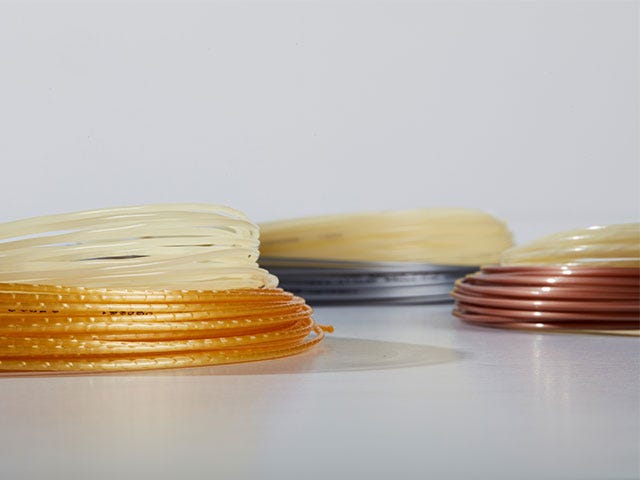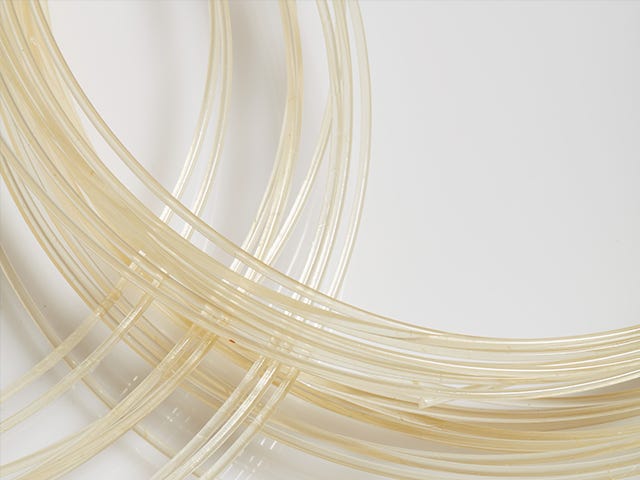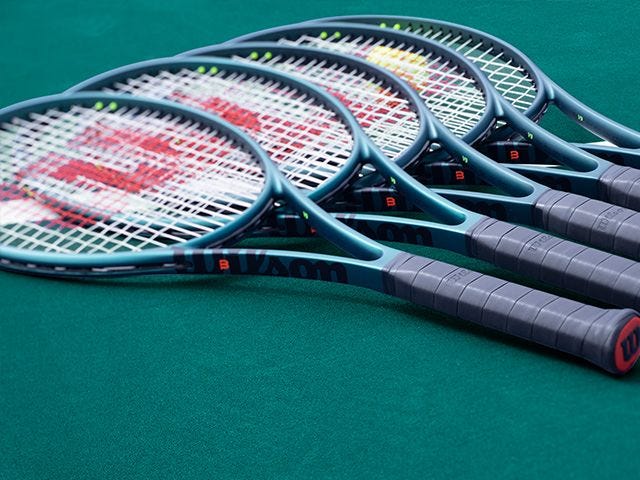
How to Choose a Tennis String
So you’ve found your perfect tennis racket. Now what? If your racket didn’t come pre-strung, it’s time to choose a string.

For many, choosing a tennis string can be even harder than choosing a tennis racket. With literally hundreds of different options, it’s tough to know which is the right string for you. Simply put, think of your racket as a car and your strings as the engine. Strings can impact your play just as much as the actual racket you use. Finding a string that works well with your racket will make you more confident in your gear and your game when it’s time to take the court.
Here are 3 things you should consider when deciding what are the best tennis strings for you:
- BENEFIT
- MATERIALS
- PRICE POINT
1. BENEFIT: What is the best tennis string for your playing style?
Just like various sizes and weights of tennis rackets create different playing experiences, different types of tennis strings produce different effects when you make contact with the ball. There are four key benefits to consider when deciding on the right string for you, those being power, control, comfort, and spin. Let’s do a tennis string comparison, going into detail on which benefits are best for certain players, and finally, which strings we recommend trying for each of these:
Power: How quickly the ball exits the string bed on contact
For who? Power strings are best for players just learning the game who haven’t yet learned how to generate their own power, as well as for junior players whose muscles have not fully developed.
Which strings? Power strings are typically made of either natural gut or nylon. The strings we’d recommend in this category are Wilson Synthetic Gut Power, Wilson NXT Power, or Luxilon Natural Gut.
Control: How long the ball sits on the string bed at contact, also known as “dwell time”
For who? Control strings are best for experienced players who can produce their own power and want to rely on their strings to help them control where the ball goes, making it easier to hit their spots.
Which strings? Control strings are typically made of polyester and in some cases nylon. The strings we’d recommend in this category are Luxilon ALU Power or Luxilon 4G and Wilson NXT Control as a control-oriented nylon option.
Comfort: How much shock/vibration you feel in your arm at contact
For who? Comfort strings are best for senior players who are more prone to arm injuries such as tennis elbow or for those that have experienced arm issues in the past.
Which strings? Comfort strings are made of flexible materials such as natural gut or nylon. We’d recommend Wilson Sensation, Wilson NXT, or Wilson Natural Gut.
Spin: How many rotations per minute the strings generate on the ball at contact
For who? Spin strings are best for competitive players looking to use spin to create a “heavy ball,” or a ball that bounces up high, making it difficult for opponents to attack.
Which strings? Spin strings are made of polyester and commonly feature different shapes and textures designed to enhance spin. We’d recommend Luxilon ALU Power Rough.
2. MATERIALS: Which types of strings, thicknesses, and combinations should you use?
In order to produce different benefits, tennis strings are made with a variety of materials and thicknesses. The three key things to think about when it comes to deciding on materials are:
- Tennis strings are made of natural gut, nylon (multifilament), or polyester (monofilament). Natural gut and nylon strings are best for beginner to intermediate players due to their power and comfort properties, while polyester is best for advanced players due to its stiffer, control-oriented properties.
Gauge: Tennis strings are made in different thicknesses, called gauges. The thicker the gauge, the more durability, and control, while the thinner the gauge, the more power and comfort. Here are the most common gauges and who we’d recommend each for:
- 15/1.40mm: Thickest gauge; best for advanced players looking for maximum durability and control.
- 16/1.30mm: Medium-thick gauge; best for competitive players who break strings frequently.
- 16L/1.28mm: Medium gauge found in Luxilon strings; best for competitive players looking for a blend of power and control.
- 17/1.25mm: Medium thin gauge; best for beginner and intermediate players who are looking for power and comfort.
- 17L/1.20mm: Thin gauge; best for players looking for increased touch and feel
- 18/1.15mm: Thinnest gauge; best for players wanting maximum touch and feel
Full bed or hybrid: Tennis strings are woven both vertically (mains) and horizontally (crosses) in a racket. That means you must decide which strings go up and down as well as which strings go side to side in your racket.
While most players prefer to use the same string for both, or “full bed,” many players have begun using two different strings, or “hybriding”, to take advantage of a mix of string benefits. For example, using a polyester string in the mains and a nylon string in the crosses will give you a mix of control, spin, power, and comfort, while using just nylon will keep your strings power and comfort-focused.
We would recommend beginners go with full bed nylon or a comfortable hybrid, intermediate players go with a hybrid, and advanced players go with either hybrid or full bed polyester. If you’re interested in trying a hybrid string set-up, we’d recommend:
- Beginner: Wilson DUO Feel (Wilson NXT/Luxilon Element)
- Intermediate: Wilson DUO Power (Wilson NXT Power/Luxilon ALU Power)
- Advanced: Wilson DUO Control (Wilson NXT Control/Luxilon 4G Rough)
3. PRICE POINT: How much do you want to spend on your strings?
With so many different types of strings out there, this may be the quickest way to identify which strings are best for you. Here are the two things to think about when it comes to string price point:
How much do you want to spend? A set of string can run anywhere from $4 to $40. While there is an option for any type of string benefit at every price point, remember that higher price points carry with them higher performance. As a rule-of-thumb, we would recommend beginners spend around $4 to $10 per set, intermediate players spend $10 to $20 per set, and advanced players spend $20 to $40 a set.
Should you buy sets or reels? A set of tennis string will string one racket, while a reel of tennis string will string 18 rackets. Reels are priced to save players money. Whether or not the value of buying a reel applies to you comes down to how often you play or how often you break strings. If you only play once a month, we’d recommend sticking with sets. However, if you play competitively and are breaking strings every week or two, we’d say go with a reel.

Just as important as choosing the right string is knowing how often to restring. It actually depends much more on your ability than how often you play. Check out our guide on how often to re-string here.
We hope you found this information useful as you decide what is the best tennis string for you. If you still have questions, send us a direct message on Instagram, and we’d be happy to help you out!
Be sure to check out some of our other content for more helpful tennis tips and tricks:
Updated January 18, 2024




